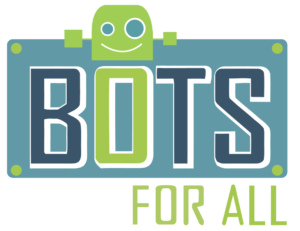OUR ORGANIZATION
- A 501(c)(3), not-for-profit organization, founded in 2013.
- Provides first class robotics and STEAM competitions and events to showcase the brilliance of young achievers.
- Provides the curriculum, counsel and, if needed, the resources to build robotics programs.
- Provides an avenue for donors and participants to make valuable investments in REAL economic growth through education.
- Provides employment and entrepreneurial opportunities for talented individuals in tech education and leadership.
OUR DIRECTORS

Rob Gordon
DIRECTOR
Rob holds a Bachelor’s degree from Dartmouth College and an MBA from The Darden School at the University of Virginia. He is a Partner at Investor Solutions with 25 years of experience in financial services. A dedicated public servant he served in Costa Rica with the U.S. Peace Corps. He is also an Advisory Board member with Teach for America Miami Dade and a RIA Advisory Councilmember for Vanguard.

Arianna Lamas
DIRECTOR
Arianna holds a Bachelor’s degree from Florida International University and a Masters degree from the University of Florida. For over 15 years she has served as a Senior Catastrophe Analyst for Assurant, the international risk management company. A Miamian, she is a graduate of Miami’s Horace Mann Middle School and South Miami High School.

Glendon Hall
DIRECTOR
Glendon Hall is an accomplished professional with extensive private equity, economic development, commercial real estate, grant procurement/management, and international finance experience in both the public and private sectors. Glen holds a Master’s Degree in business administration from Duke University and an undergraduate degree in Computer Science from Morehouse College

Ana Bar-Chen
DIRECTOR
Ana holds a Bachelor’s degree from the University of Miami and a Juris Doctor also from the University of Miami. She is a senior executive with HEICO Component Repair Group Ana’s experience in the aviation industry is extensive and she has significant experience in developing and promoting technology leaders for fast growing technology organizations. She is a native Miamian.
OUR PROGRAMS
We inspire and engage young people from all walks of life to be curious, creative, responsible and bold in pursuing science, technology, engineering and math careers.

Junior Orange Bowl – Bots for All Robotics Challenge
We partner with the Junior Orange Bowl Committee and the City of Miami Springs to host one of Florida’s premier robotics competitions. The competition features teams from across the state and even some from other countries who join to compete for glory and recognition in the academic robotics community globally
RoboSLAM® Miami
An unparalleled robotics competition and STEM extravaganza. Thousands of spectators and competitors attend this event to see the best and the brightest compete and show off. We partner with Miami-Dade County Public Schools, the Miami-Dade County Fair and Exposition Center, and many others to showcase your brilliant young achievers.

DONATE TODAY
Your donation builds our community’s intellectual capital!
We are a 501(c)(3) organization so your investment is potentially tax deductible.
We have partnered with eGiving to process your gift and provide first class donation security and reporting.

